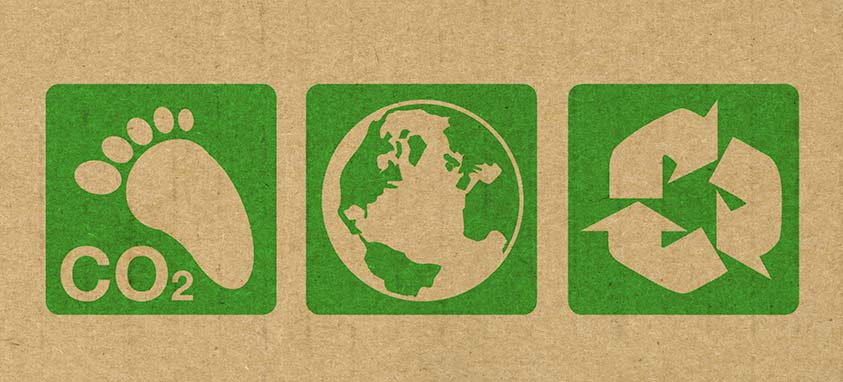Mode of travel determines how green your meeting is
There’s no question that organizations should measure and minimize the environmental impact of their meetings and events. But what is the best approach to ensure the greenest meeting possible?
Many planners—partly because of the marketing messages of venues themselves—spend a significant amount of time focused on venue-related tactics: going paperless and plastic-less, ensuring proper recycling streams, reducing water usage, reducing energy for lighting and climate control, and others.
But case studies of different types of events reveal that travel alone generally accounts for more than 70 percent of an event’s pollution footprint, mostly in the form of carbon emissions. Food and beverage contributes about 10–12 percent, and accommodations another 10 percent. The event venue itself generally contributes less than 5 percent of the pollution footprint.
Choose the Right Destination
 Knowing this, the most efficient area for planners to reduce environmental impact of their events is one they and their bosses can control, versus areas that require coordination with suppliers. That area is destination selection.
Knowing this, the most efficient area for planners to reduce environmental impact of their events is one they and their bosses can control, versus areas that require coordination with suppliers. That area is destination selection.
James Watson, founder of Toronto-based Green Meeting Ninjas, an advisory firm for both planners and suppliers, says that “choosing the right destination has a huge impact on a meeting’s carbon footprint. Short-haul flights are the worst offenders; their carbon footprint is enormous. So if you can use the right city, this is probably the easiest way to drastically reduce an event’s carbon footprint.”
There’s a web-based calculator to assist planners in finding the 10 best potential destinations for a particular meeting, based on where attendees are coming from, on the site of the International Civil Aviation Organization.
Instead of a short-haul flight, there should be potential for a critical mass of attendees to drive or take a train or bus to the event. For instance, Watson recently drove nine hours with a colleague from Toronto to Boston for a meeting. Although that is the outer limit of reasonable non-air-travel time for attendees to consider, he notes that his trip was not much longer than the door-to-door trip would have taken using air transportation.
Riding a train or bus would have had an even more beneficial effect in reducing emissions. Attendees who travel these ways have flexibility on arrival and departure, and can use travel time to be productive. And, “air travel is more expensive than other modes of travel, so you’d achieve cost savings, too,” Watson says.
Jeff Kear, co-owner of Planning Pod, a project-management software firm in Littleton, Colorado, suggests that planners offer discounts, perks or upgrades to attendees who use the least-polluting means of travel to an event.
These can include gifts or discounts involving a program sponsor, or they can be conference-specific: priority seating, value-added programming, meet-and-greet receptions with speakers, upgraded menu options, etc. Planners also can tweak the agenda so attendees have more time for travel on either end, as further motivation.
To counter the environmental effect of attendees who must fly, host organizations can purchase carbon offsets from specialty firms such as CO2Forestry, CarbonZero and Offsetters, which fund nature projects that scrub carbon from the atmosphere.
What Does ‘Local’ Really Mean?
Regarding food and beverage, Watson stresses that a unique calculation must be made for each destination, depending on which items (meat, poultry, produce, wines, etc.) are produced locally—and depending on what the term “locally” means in that destination.
A widely circulated figure for consumables that are considered most environmentally friendly is 200 miles or less. However, Watson notes that cities such as Las Vegas have few options within that radius, and even Toronto must look to the farms of southern Ontario, more than 200 miles away, for its goods.
Register for Our Next Webinar “Effective Tips for Organizing a Successful Green Meeting.”
But F&B items that come from the closest providers via ground transport will always trump whatever would be flown in. Further, Kear says that the fewer animal-based items served at a meeting, the lower the carbon emissions required to provide attendees’ meals. Planners should check the venue’s locally produced menu options so they know their ability to minimize environmental impact at that property.
When it comes to accommodations and the meeting venue itself, planners should ask at the outset which green certifications a property has achieved. The most rigorous are APEX/ASTM and ISO 20121; these programs include LEED, Green Globes, Energy Star and other more specific sub-programs, all of which represent approaches to “greening” a building’s operations.
Finally, planners should ask about local issues at a specific destination and how a meeting can avoid contributing to the problem there. For instance, California is presently in a drought, so some restaurants are using compressed air to pre-clean dishes before washing, thereby reducing wash-water usage by more than 70 percent.




